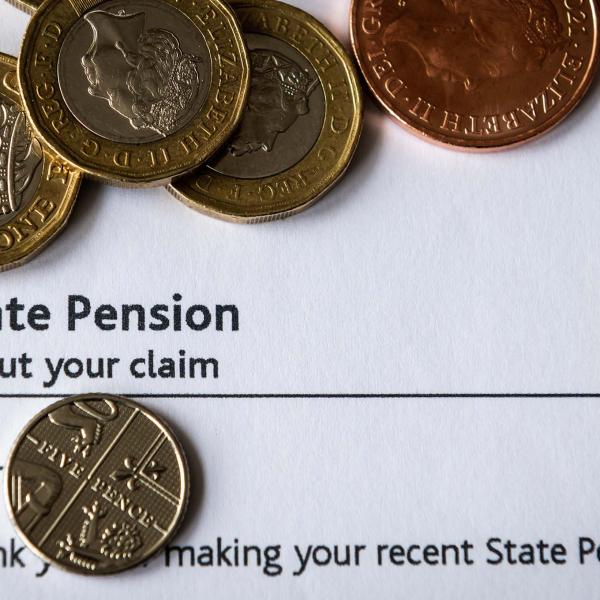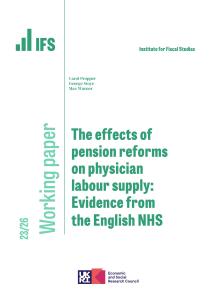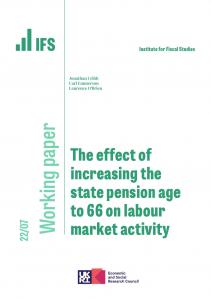This comment piece was first published by The Times and has been reproduced here with permission.
Here are two facts. First, state spending, after inflation, won’t be much different in 2019 to what it was in 2010. Second, we are in a decade of extraordinary public spending cuts, which will mean spending on services such as police, transport, local government and environment, being reduced by more than a third over the same period.
How can both be true? Debt interest payments and an ageing population are the main answers.
Because we have borrowed more, we have to pay more interest. That reduces the amount that can be spent on services. Ageing has a similar effect. More older people means more spending on them and a squeeze elsewhere. And we are living through a profound demographic change. By 2020 there will be about two million more people aged over 65 than in 2010. That’s an increase of 20 per cent in a decade.
One consequence is increased spending on pensions. Despite increases in the state pension age for women, we are likely to be spending about £12 billion more on benefits for pensioners in 2018-19 than in 2010-11. Spending on public service pensions for retired nurses, teachers, civil servants and so on, is also rising fast.
At the same time an ageing population puts increasing pressure on the health service. The NHS budget may be “protected”, but it has to cope with a bigger and older population. The Institute for Fiscal Studies (IFS) calculates that keeping health spending constant over the decade will amount to a 9 per cent cut if the population had remained the same.
In the long term these changes will continue. To accommodate them we have three choices and only three: we can reduce benefits and services for the old; or we can recognise that demands on the state have risen and therefore increase the size of the state and hence taxes; or we can continue to make big cuts to spending on most other things that the state does.
The choices made by the government over this parliament have been pretty clear. It has decided not to increase the size of the state or taxes. And it has focused cuts on those of working age. Spending on benefits for pensioners has largely been protected. Some cuts to benefits for most people retiring after about 2030 have been announced, but not in a way that will be comprehensible to many.
But those currently retired and hitting the state pension age over the decade have been spared most of the effects of austerity, at least in terms of their incomes. Support for social care, paid through local government, has been squeezed quite hard — perhaps because this spending is less visible to most.
Cutting benefits for those over the state pension age is obviously difficult. People retire with a set of expectations about what the state will provide and may find it hard to adjust if that support is reduced. More prosaically, pensioners vote. But in thinking about the shape of support for the older population it is important to be aware of one rather important fact.
Pensioners as a group have stopped being poor. Or rather we have moved from a world only 30 years ago in which pensioners were much more likely to be poor than their younger counterparts to one in which they are less likely to be poor. In 2011, for the first time, the average incomes of pensioner households, adjusted for housing costs and the costs of children, rose above the average incomes of the rest of the population. Recent work by my colleagues at the IFS suggests that most people retiring now will be better off in retirement than they were on average over their working lives.
This is probably the greatest triumph of social policy during my lifetime. But understanding and policy decisions often lag behind facts such as these. The continuing “triple lock” on state pensions, so that they rise by whichever is the fastest of prices, earnings or 2.5 per cent, and the continued protection of benefits such as the winter fuel allowance, must be seen in this context.
One problem is that once something is established in public policy, perhaps for very good reasons, it can be hard to change. This is true of rather small things such as the winter fuel allowance which, for all the publicity associated with it, costs only £2 billion. It is also true for much bigger things.
Here are just three examples:
Gross spending on pensions for former public sector employees will approach £36 billion this year. Despite some reforms, these pensions, and those being accrued by current public sector workers, are hugely more generous than almost anything in the private sector.
No national insurance contributions are made when private pensions are paid out, nor were they paid on most contributions into pension schemes, a hugely generous tax break that costs billions. Decades of cutting income tax rates and increasing rates of national insurance contributions have, probably inadvertently, benefited pensioners at the expense of workers.
In the past 50 years male life expectancy at 65 has risen by nearly ten years. The state pension age has not changed at all. In that context plans to raise it by a couple of years by the mid-2020s don’t look so radical.
We may decide we do not want to change these things — but we do need to be aware of the costs of not doing so.









